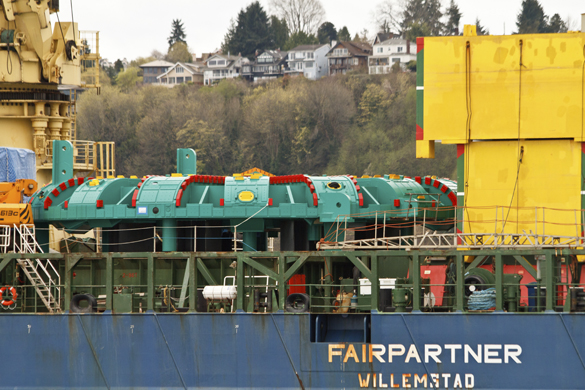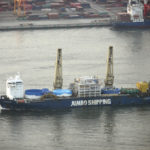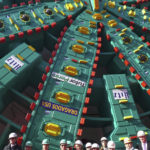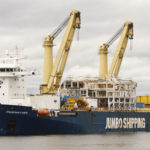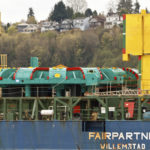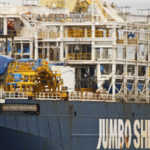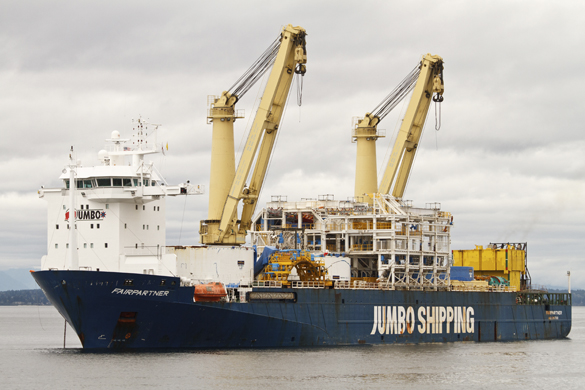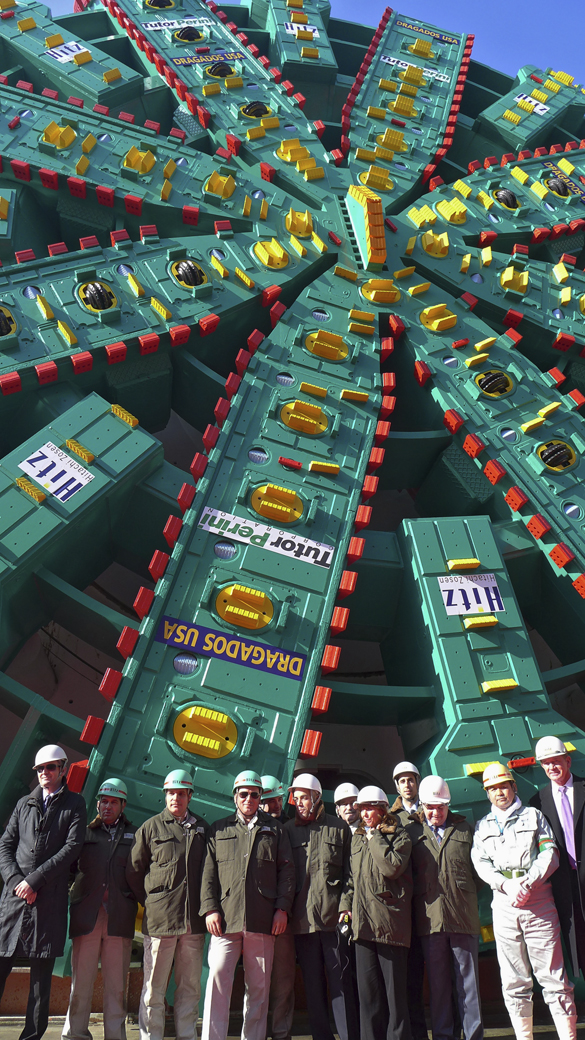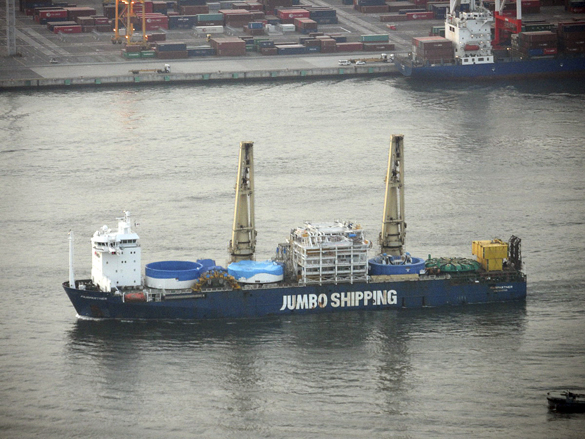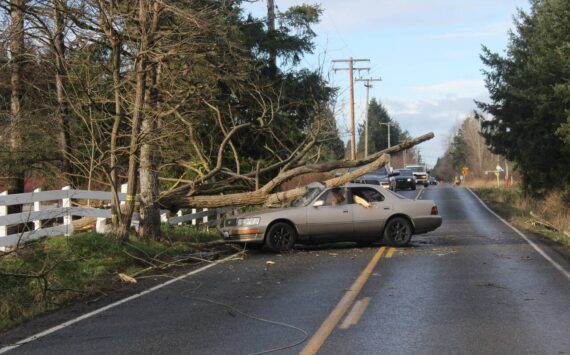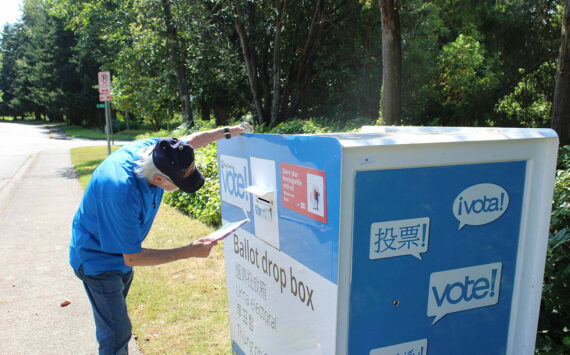Sixty years ago this week, Seattleites welcomed the State Route 99 Alaskan Way Viaduct to the city’s downtown waterfront. On Tuesday, the waterfront again welcomed a hulking guest: Bertha, the five-story-tall tunneling machine that will clear the way to the viaduct’s removal in 2016.
The ship carrying the $80 million machine that will dig the SR 99 tunnel beneath downtown Seattle entered Washington waters Monday. Its two-week journey from the manufacturing plant in Osaka, Japan ended Tuesday in Elliott Bay.
Bertha’s arrival will allow crews to begin offloading her in preparation for tunneling this summer.
“We’re entering a very exciting phase of the project,” said Washington Gov. Jay Inslee. “This brings us one step closer to replacing the seismically vulnerable Alaskan Way Viaduct.”
Built in Osaka by Japanese firm Hitachi Zosen Corporation, Bertha is owned by Seattle Tunnel Partners (STP), the Washington State Department of Transportation’s contractor for the tunnel project. She was taken apart into 41 pieces, the largest weighing about 900 tons, before being loaded on the Jumbo Fairpartner in March. The Fairpartner started its 5,000 mile journey from Osaka to Seattle on March 19. Because travel times across the Pacific Ocean depend on weather, STP wasn’t able to confirm the ship’s arrival date until this week.
WSDOT will have a live webcam pointed at the Port of Seattle’s Terminal 46, once the ship has berthed, and has posted a map of locations where the public can view Bertha’s arrival and unloading on a new Web page devoted to tracking her journey.
Crews at Terminal 46 will spend the next several weeks offloading her in pieces. The pieces are arranged strategically on the Fairpartner, so that crews unloading the ship can move them to predetermined storage locations within the work zone. Offloading crews must work around regular port activities, so there could be periods of inactivity or times when the Fairpartner has to leave her spot at the terminal to make room for an incoming cargo ship.
Once crews finish building an 80-foot-deep launch pit, the stored pieces of the machine will be lowered into the pit for reassembly and testing, which will take two to three months. As Bertha’s owner, STP is responsible for ensuring she functions properly at all times. Accordingly, she went through a succession of rigorous tests in Japan, one of which revealed a problem with the machine’s main drive unit that has since been repaired. Bertha passed all of her tests and will officially become the property of STP once she’s successfully tunneled approximately 1,000 feet.
In addition to building the launch pit, crews in Seattle are preparing the surrounding area for tunneling. That includes strengthening the soil and building protected underground work areas along the initial section of the tunnel route so crews can perform scheduled inspections of the machine before it begins tunneling beneath the city.
Work is also under way near the north end of the Battery Street Tunnel to prepare the area where Bertha will emerge at the end of tunneling.
A 10-foot-long interactive model of Bertha is on display at Milepost 31, the project’s information center in Pioneer Square. Photos of the machine and construction in Seattle are also available.
More information about the SR 99 Tunnel Project is available online at alaskanwayviaduct.org.
- Celebrate Bertha’s arrival at these locations: www.downtownseattle.com/bertha/
- Charting Bertha’s course to Seattle handout (pdf 234 kb)
- Check out this short video (or view on Youtube) to see the inner workings of a tunnel boring machine.
- Go to Milepost 31 in Pioneer Square to see a motorized, 10-foot-long model of Bertha.
- WSDOT’s Flickr site has photos of crews building the machine Japan and crews in Seattle preparing for the machine’s arrival.
